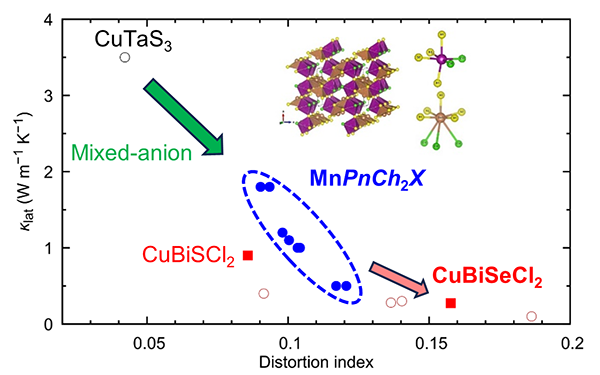MANA International Symposium 2025
Session 6-4
Abstract
Thermal transport in crystalline solids is strongly influenced not only by crystallographic long-range order but also by local structural features. Locally distorted coordination environments and dynamical structural fluctuations can significantly suppress lattice thermal conductivity, yielding glass-like behavior. Mixed-anion materials with distorted heteroleptic coordination, where different types of anions are asymmetrically arranged around a cation, have emerged as a platform for ultralow lattice thermal conductivity (Fig. 1)

Reference
- N. Sato et al., J. Mater. Chem. A 9, 22660–22669 (2021). DOI: 10.1039/D1TA04958E
- T. Katase, N. Sato, T. Mori, under review.
- Y. Ishii et al., Phys. Rev. B 106, 134111 (2022). DOI: 10.1103/PhysRevB.106.134111

